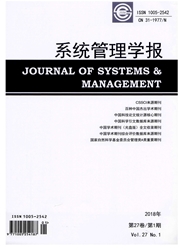

 中文摘要:
中文摘要:
选择沪深两市2000~2009年的上市公司的数据,将上市公司按其所在省份进行划分。以某一省的所有上市公司对另一省的所有上市公司的投资来反映这两省之间的相互投资关系。实际数据证实了省间的相互投资网络属于典型的稀疏型无标度网络,网络中存在相对较多的hub节点。通过聚类分析、绘制网络图的方式研究了网络的变化趋势,证明了西部大开发政策和振兴东北老工业基地政策对缩小中国各省之间的贫富差距的成效并不显著。其中,辽宁是振兴东北老工业基地政策最大的受益者。最后,通过计算网络中西部省份、东北三省与其地区间的相互投资总额,证实了西部大开发政策从2005年开始取得了一定的成效,证明了宏观经济政策的效果逐渐显现。
 英文摘要:
英文摘要:
The data of list of listed companies and its largest shareholders in Shanghai Stock Exchange and Shenzhen Stock Exchange from 2000 to 2009 are collected.The listed companies are divided by their locations at provincial level.The amount of shares from a province's listed companies to another province's listed companies represents the mutual investment relationship of the two provinces.The network constructed in this way is called mutual investments network and it is a sparse scale-free network with relatively more vertices.Through cluster analysis and network analysis,the networks change trends are studied.It shows that the Development of the West Regions and the Rejuvenation of Old Industrial Bases in Northeastern China based on the mutual cross-shareholding networks of the listed companies haven't reduced the wealth gap between the poor provinces and developed provinces significantly,and Liaoning province benefits mostly from the strategy of Rejuvenation of Old Industrial Bases in Northeastern China in the past few years.By computing the total assets of the mutual investment between the twelve provinces in Western China(or the three provinces in Northeastern China) and the other provinces,it shows that the strategy of the Development of the West Regions have gained certain achievement since 2005.
 同期刊论文项目
同期刊论文项目
 同项目期刊论文
同项目期刊论文
 期刊信息
期刊信息
